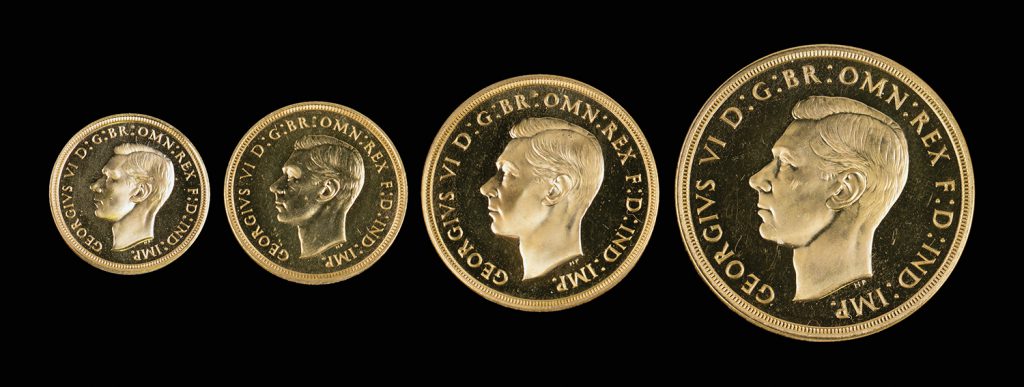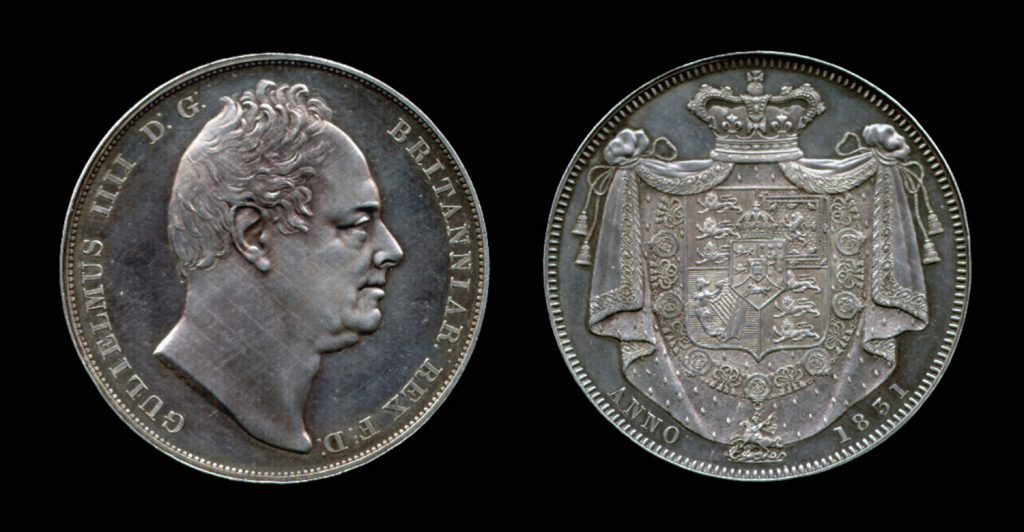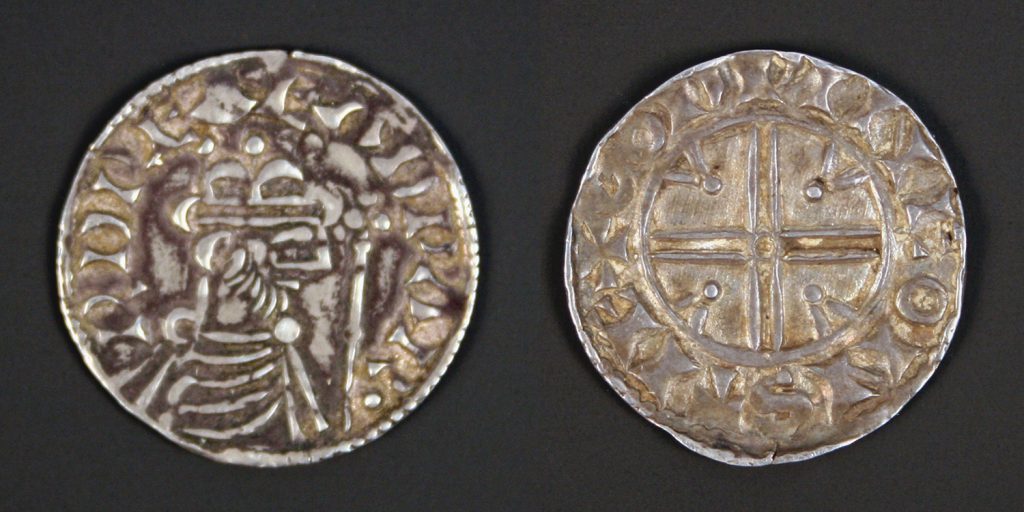
The field of coin collecting brings together social, political and economic history with art and culture. Coins have been collected since Roman times and provide a tangible link to our past, present and future.
Coins have often been crafted by the finest engravers and sculptors of their time and are frequently works of art in their own right.

Whilst rarity is important to the value of any particular coin it is condition which is of overriding significance in establishing values. There is an enormous disparity between the price of a worn example of a coin compared to one in extremely fine or uncirculated condition. This is apparent in the prices realised by the exceptional George VI gold four-coin specimen set from 1937 and the William IV Crown from 1831 which made £8500 and £6000 respectively at Toovey’s specialist coin sales.

Sharper coins were produced by the process of milling coins with dies mounted onto a screw press. This can be seen by comparing the handmade Charles I gold Unite with the later coins illustrated. The Unite was a 17th century gold coin worth twenty shillings or one pound but this example sold recently at auction for £1600. The difficulties of manufacturing blanks to a uniform weight ensured that coins continued to be made by hand until the Restoration in 1660. Charles II brought the Roettiers brothers with their improved screw press from Holland to London. The first English coins made by this method for circulation were the 1662 silver Crowns.
As a general rule coins should never be cleaned without seeking expert advice. Silver and copper coins can appear to be tarnished but this patina is prized by collectors.
Collectors quickly develop an understanding of condition and quality. As they handle and inspect different examples their understanding and eye tone.
There are many fields to capture the attention of collectors. Some will collect coins from a particular country, others will focus on a specific type of coin like Crowns, or a period. Many are attracted by collecting coins made from precious metals.
I love to imagine who might have held the coins which come to auction and what points of history they have encountered.
With such breadth of interest, price and quality coins have a growing following and remain one of the most buoyant collectors’ markets.
By Rupert Toovey, a senior director of Toovey’s, the leading fine art auction house in West Sussex, based on the A24 at Washington. Originally published in the West Sussex Gazette.